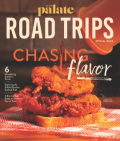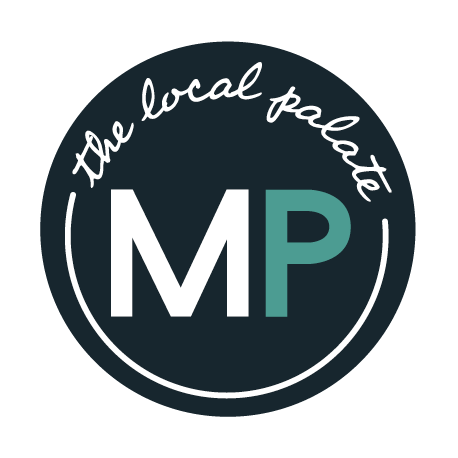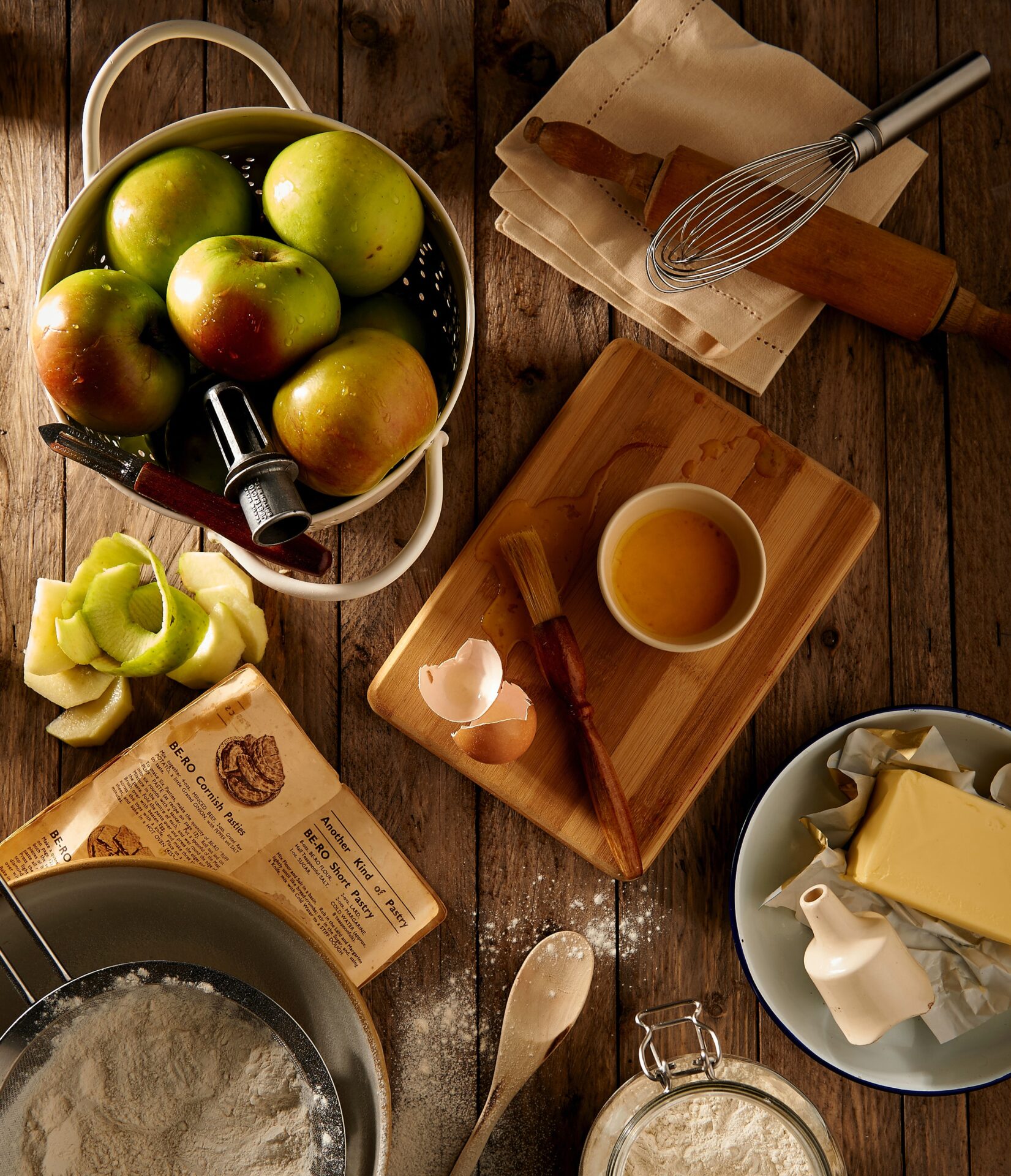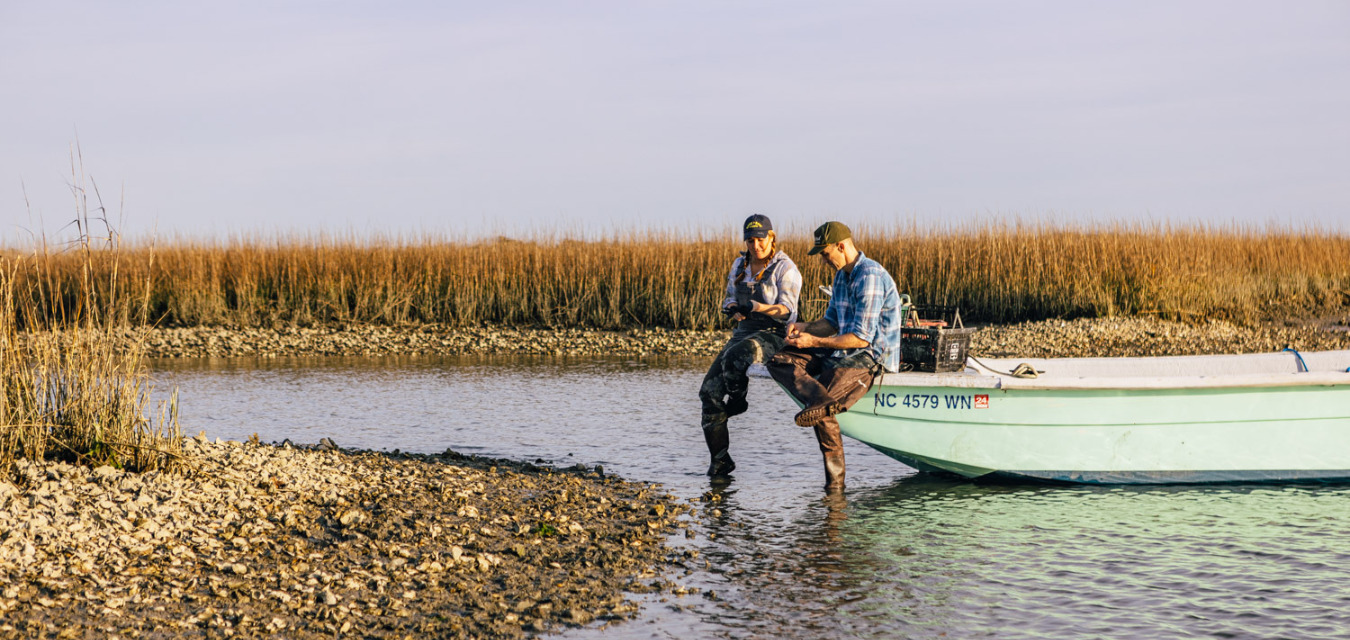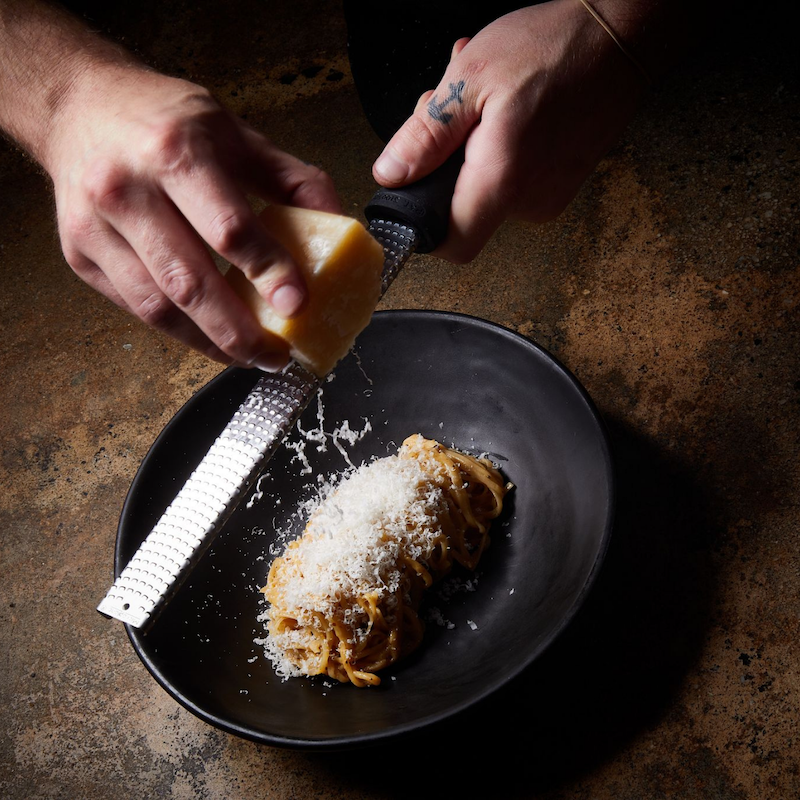Out in the marshlands around Wrightsville Beach, North Carolina, Ana Shellem harvests a very different form of seafood than most fisherpeople. She’s one of the few collecting wild oysters commercially, along with whelks, stone crabs, razor clams, sea greens—essentially, anything edible is fair game. A one-woman operation, Shellem’s model relies entirely on Mother Nature. Her business language is tide charts, and sustainability sits at the core of her practice. With a client list of only eight, she works closely with her chef partners to ensure that everything she harvests gets used in the kitchen.
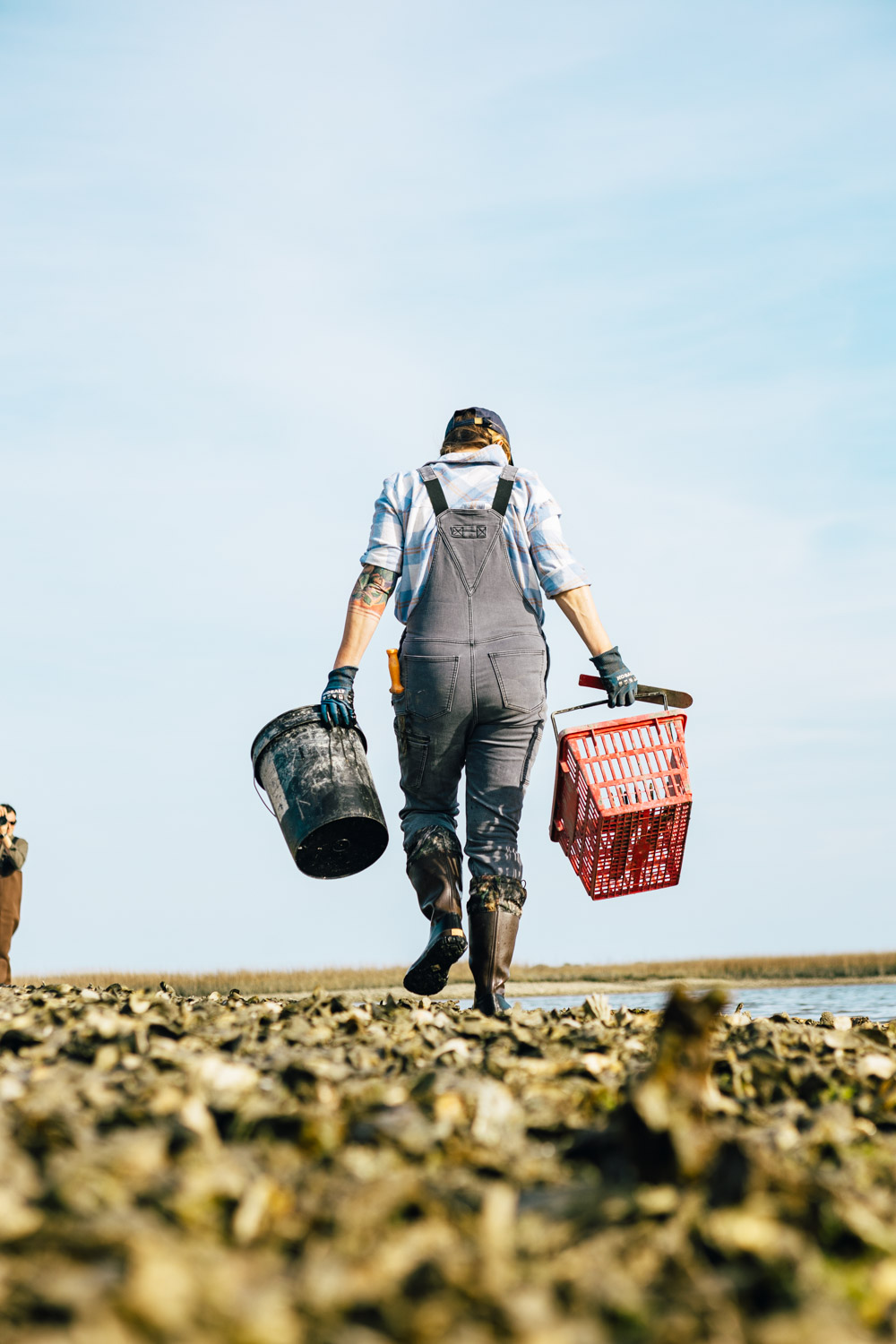
“What Ana’s doing—this is the hardest shit that’s ever done,” says Dean Neff, chef and owner of Seabird in Wilmington and one of Shellem’s customers. “She’s catching it from the marsh, driving and distributing it herself. People don’t understand how much work goes into food, but it’s such an important piece of what [Seabird] is.”
Shellem launched Shell’em Seafood Co. in 2018. Her knowledge of fishing and foraging is largely self-taught. In a past life, she lived in New York, acting, modeling, and working with a photography agency. She first visited Wilmington for a photo gig, and within the year,
she moved to the North Carolina beach town. When she first started dating her now-husband John Shellem, they took kayaks out to fish for date-night dinners. At the time, he was learning from older fishermen how to find wild oysters and clams in the silty waters around Wrightsville Beach. He shared this with Ana, and it sparked her fascination. She read up, learning about the regional shellfish, how to find them, and most importantly, what to forage based on the season and how to do so in a way that could turn a profit without compromising the local supply.
Shellem started harvesting on a commercial scale—though still small enough for her one-person bandwidth—supplying to restaurants between Wilmington, Charlotte, Raleigh, and the Outer Banks. She’d harvest at dawn, then clean and pack her catch on ice before driving it hours away. Leading up to the pandemic, Shellem distributed to 13 different clients. She scaled her focus down in the aftermath and keeps her operation intentionally small, a rarity in her industry. “If it gets any bigger, it’s no longer sustainable,” she says. Her harvest territory is localized to the marshes around Wrightsville Beach—there’s no going offshore, no going into neighboring waterways when harvests are slim. Working with chefs like Neff gives her flexibility to bring in whatever she finds, regardless of whether or not the chef ordered it. “We have open communication of what each week allows as far as abundance goes. I let Dean know what’s out there, and it’s structured with a max capacity,” she says.
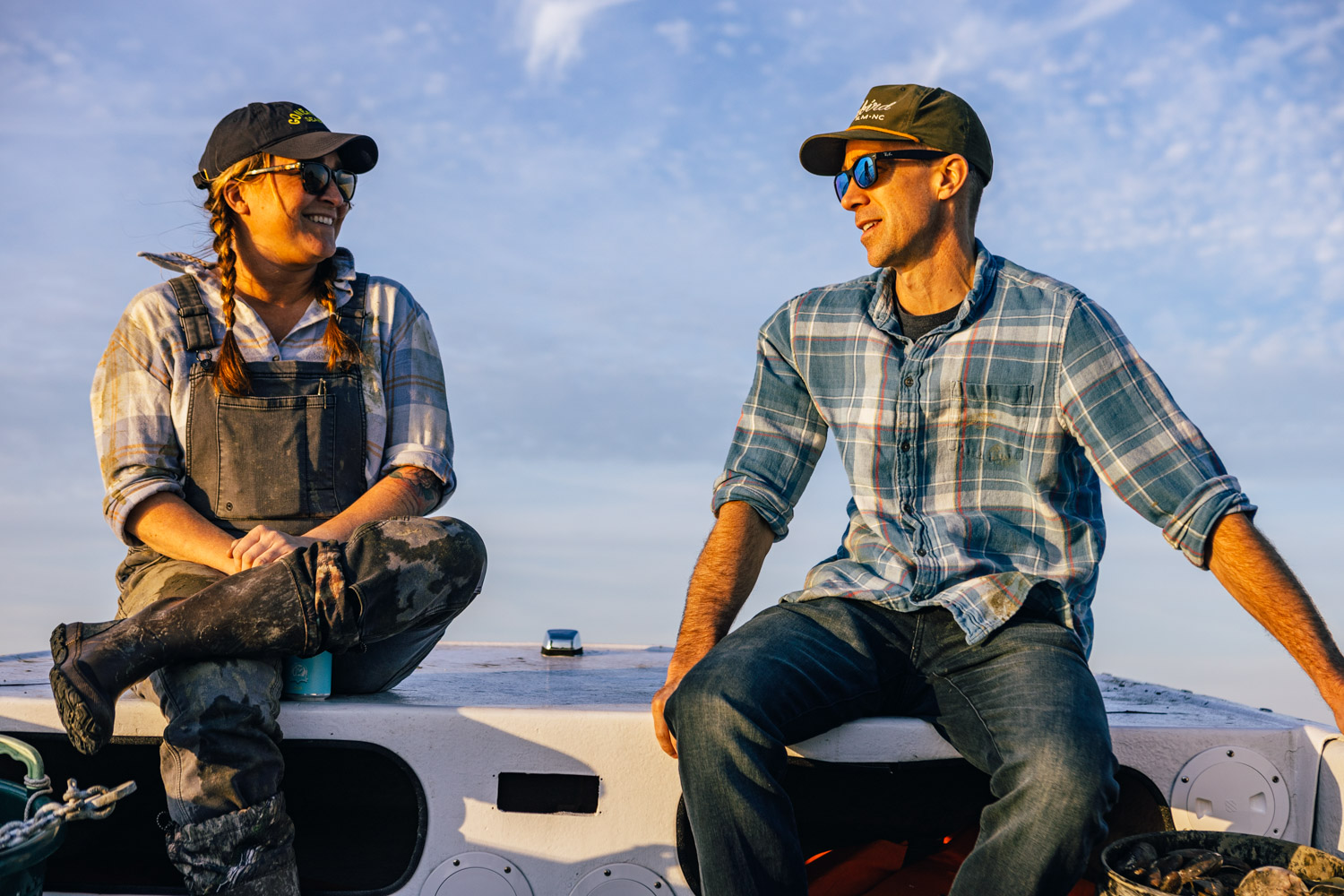
Neff adds, “I’m like, bring us what you get. We know we want it; we know we want it here.”
Sustainably sourced North Carolina food anchors the menu at Seabird. Anything Shellem brings through the door—whelks, clams, mussels, seaweed—Neff and his team will turn into an award-worthy presentation: creamy whelk chowder, mussels escabeche, pickled clams, dead man’s fingers salsa verde, the list goes on.
“You see everything in the restaurant. There’s no back door,” Neff says. “People get to see who all the vendors are, and that’s the fun part. [They] now recognize Ana at the restaurant, and serving her food lets us share her story.”
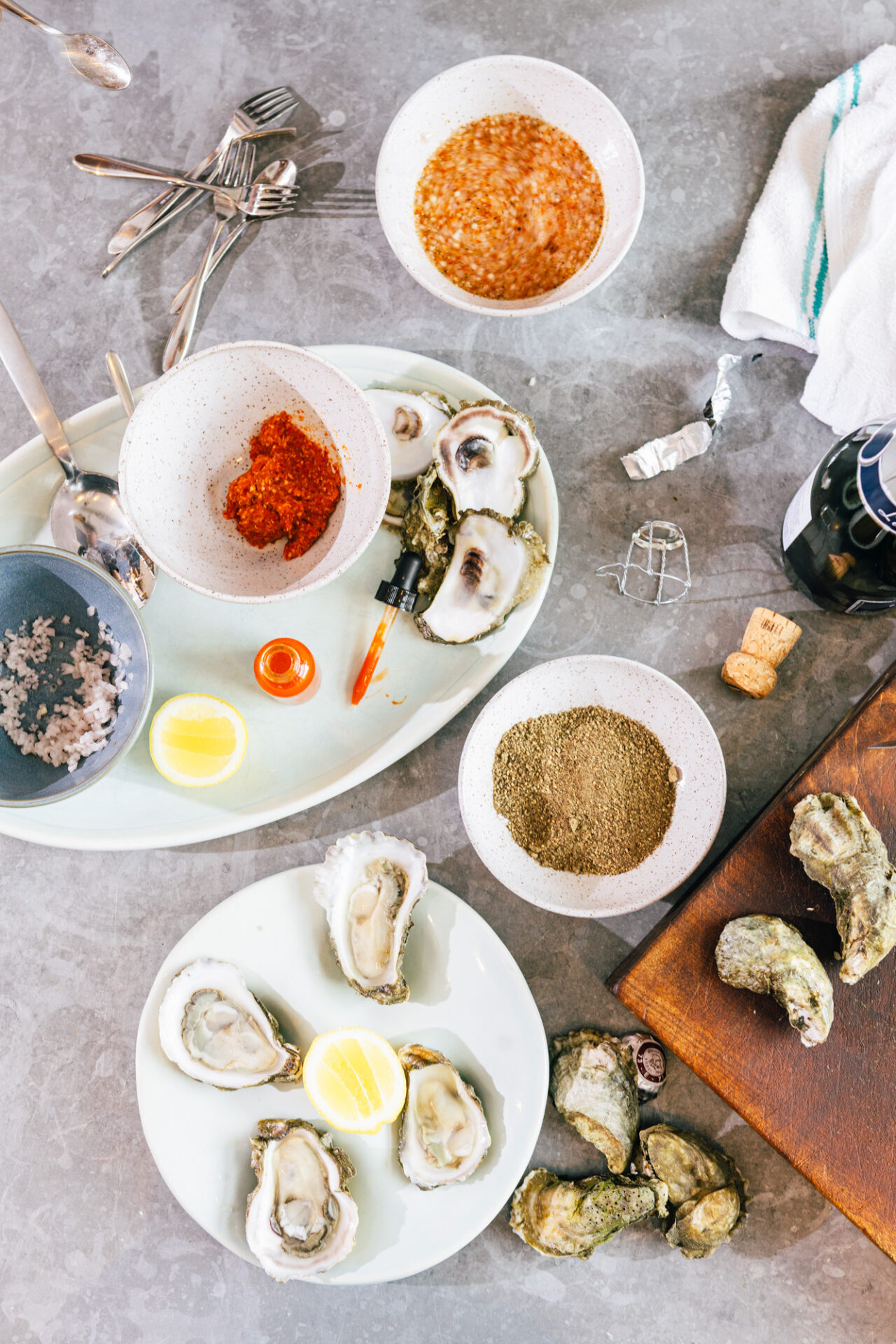
After more than a year of working together, Shellem takes Neff out to her favorite spot on Masonboro Island along Wrightsville Beach. Her eyes quickly identify the spots in the mud where oysters lie in wait. Clam rake in hand, she deftly swings it into the brackish earth, turning up oysters and clams with each motion. She shows Neff keyhole-shaped patterns in the mud and instructs him to dig—it’s the chef’s first time in the field with his vendor, and he grins with each mollusk he pulls from the silty shore.
Any oysters that fall shy of legal catch size, Shellem tosses back into the water. “When I come here next year, they’ll be big enough to handle,” she explains. Harvesting wild oysters means trusting low tide beds, and as Shellem says, “I prefer to let Mother Nature be in control.”
Many grow in clusters and require two hands to handle. For those, Shellem switches tools, exchanging her clam rake for an iron “cluster buster” she made herself and uses to separate clusters of wild oysters.
After loading Shellem’s skiff with the day’s catch, Neff unearths two oyster knives and a tiny bottle of Seabird’s signature hot sauce from his pocket. Knee deep in the cold water, he and Shellem each grab a beer and shuck a few oysters and clams, dousing them with hot sauce as golden hour sets in. But not for long—back at the marina, Shellem hoses down the catch on the fish cleaning tables and packs a cooler for Neff to take to the restaurant.
That evening, Neff brainstorms preparations. Fall weather in eastern North Carolina fluctuates between extremes: sunny and 80 degrees one day, a blustery, wild nor’easter the next. To match the available shellfish with the transitional season, Seabird’s menu balances cozier concepts with refreshing preparations that hold on to summer.
Neff prefers to let the wild oysters’ natural flavors shine in simple preparations. A quick mignonette cut with Spanish cava and seasoned with dead man’s fingers, shallots, and sambal puts a new, effervescent spin on pairing oysters with sparkling wine.
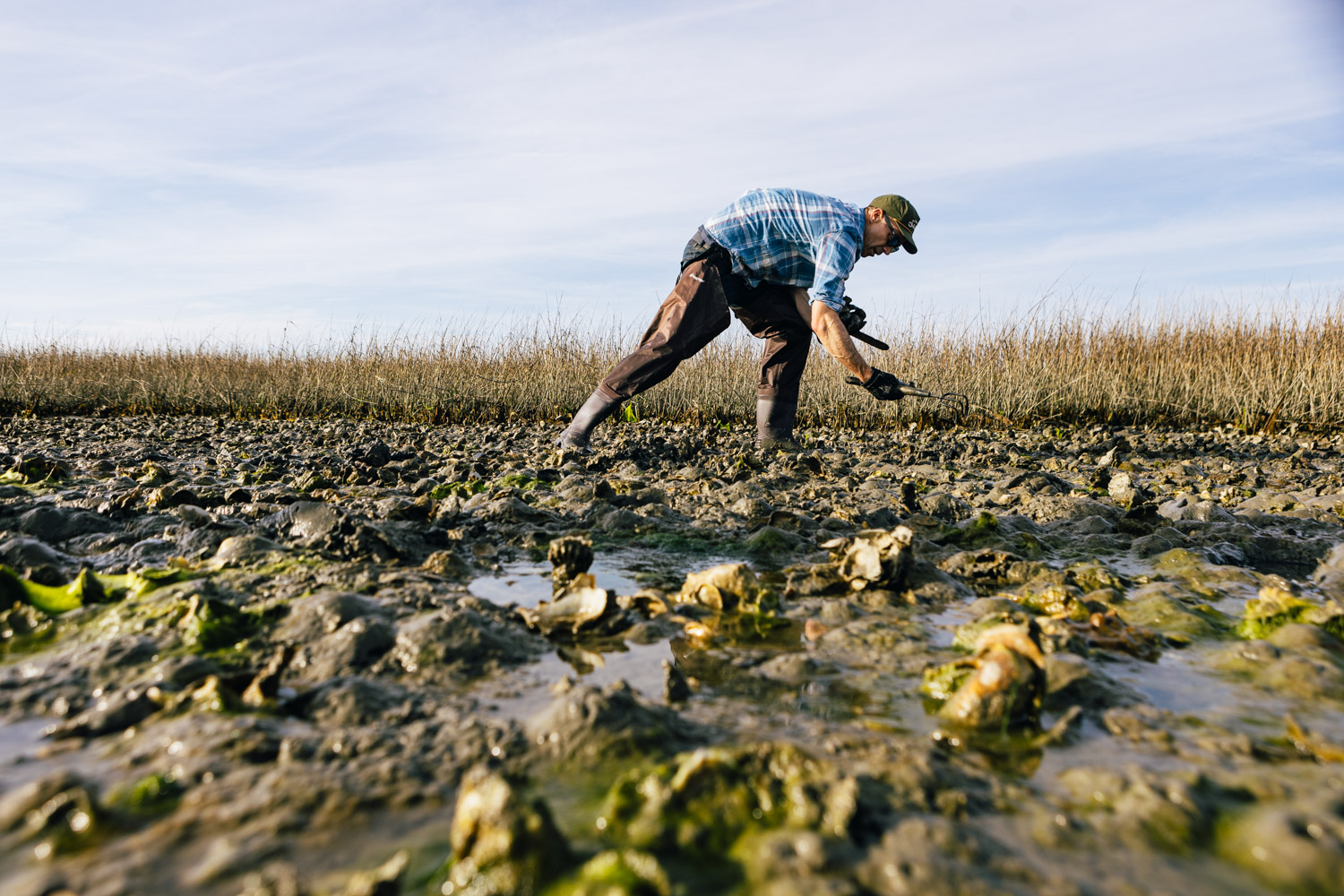
Other catches need more processing, such as whelk. “They’re a tough piece of shellfish,” Neff says. “They look like they fell out of space.” He blanches it in the shell first, softening it just enough to jam a long-pronged fork into the meaty interior and pull, twisting in a spiral motion, to dislodge the whelk. It looks like an internal organ, but it’s Neff’s key ingredient in a recipe he prepared at a James Beard House dinner, a creamy mushroom-leek stew. Once poached in court bouillon for hours—a French preparation that includes the tradition of bobbing a cork in the boiling stock, which is said to help soften the whelk—the shellfish becomes an ingredient Neff shaves with a mandolin to create shiitake-like slivers for garnish or sometimes purees whole with mushrooms, leeks, and cream yielding a rich, umami chowder.
“Someone as specialized as Ana has to be mindful of demand,” Neff says, admitting that he could ask for more, “but I don’t want to be greedy.” As a result, every ingredient is approached with versatility at Seabird, and a pickled seafood platter is the failsafe way to use any shellfish that Shellem supplies.
Partnering with chefs like Neff who can adjust the menu to what Shellem can and can’t supply each week keeps the sea forager’s business afloat and demonstrates that small-scale commercial operations can follow hyperlocal, natural maritime patterns when the
consumer appreciates their mission. “In sustainable seafood, there’s no guaranteeing anything. You have to be flexible,” Shellem says.
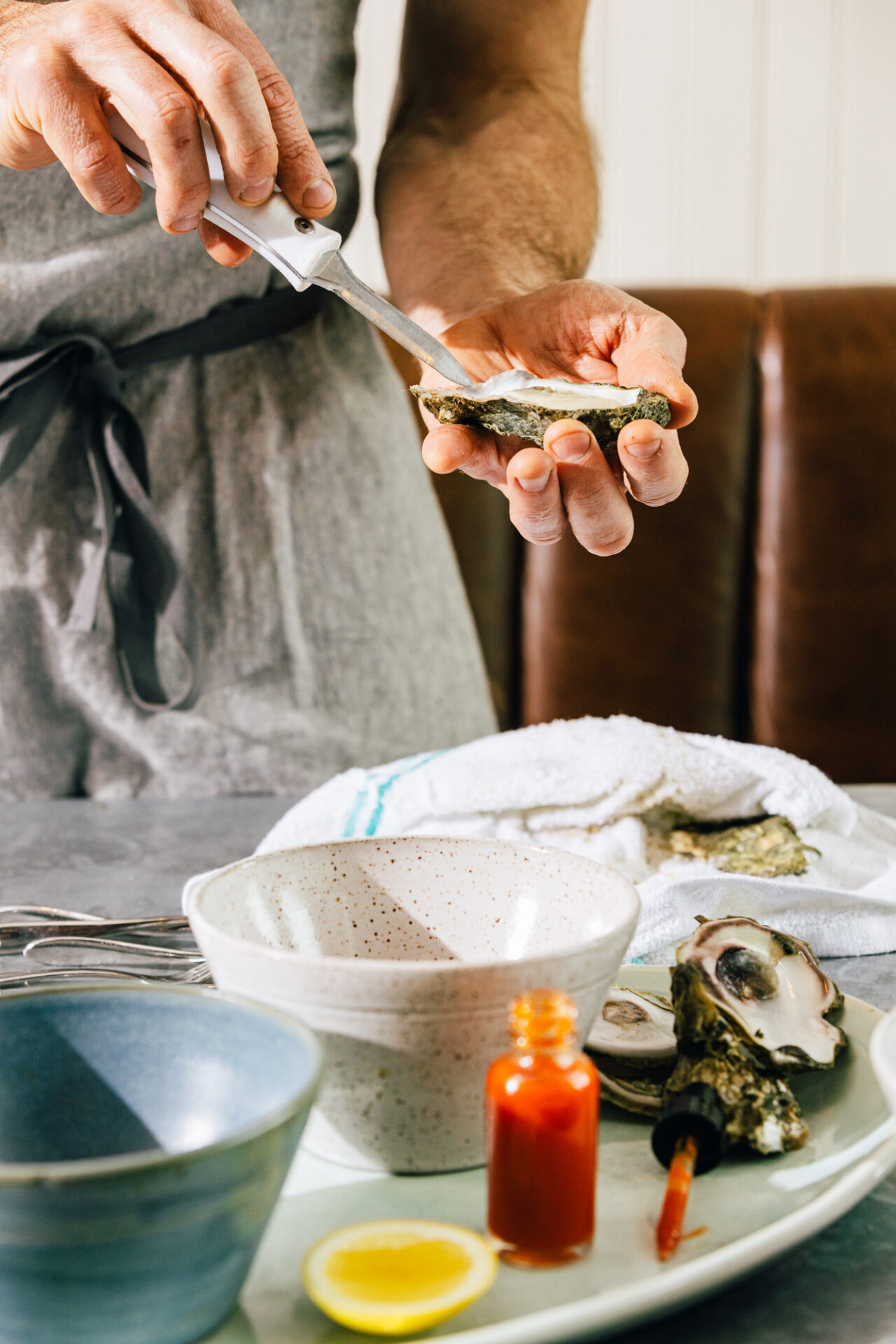
Sea Foraging Recipes
Poached Whelks
Whelk and Shiitake Stew
Cava Mignonette
Pickled Seafood
Dead Man’s Fingers Salsa Verde
Sambal
Prickly Pear Hot Sauce
Keep Reading
On the Road
New Restaurants in North Carolina
From martini bars to upscale diners, contributor and Tar Heel native Jenn Rice gives an overview of the new faces characterizing North Carolina’s dining scene.
share
trending content
-
Spectacular Summer Moments Await in Boone, North Carolina
by TLP's Partners -
7 Cookbooks All About Barbecue | Listen
-
A Global Table
by TLP Editors -
8 Frozen Drinks to Cool Down Independence Day
by Peyton Hassinger -
Pairing Wine with Pizza | Listen
by Amber Chase
More From In the Field
-
Kohlrabi: Pretty Ugly
-
Meet the Newest James Beard Award Winners from the South | Listen
-
OKO Brings Filipino Soul to East Austin | Listen
-
The Local Palate’s Guide to Chattanooga | Video
-
Find Your Top Dry Bar in the South | Listen
